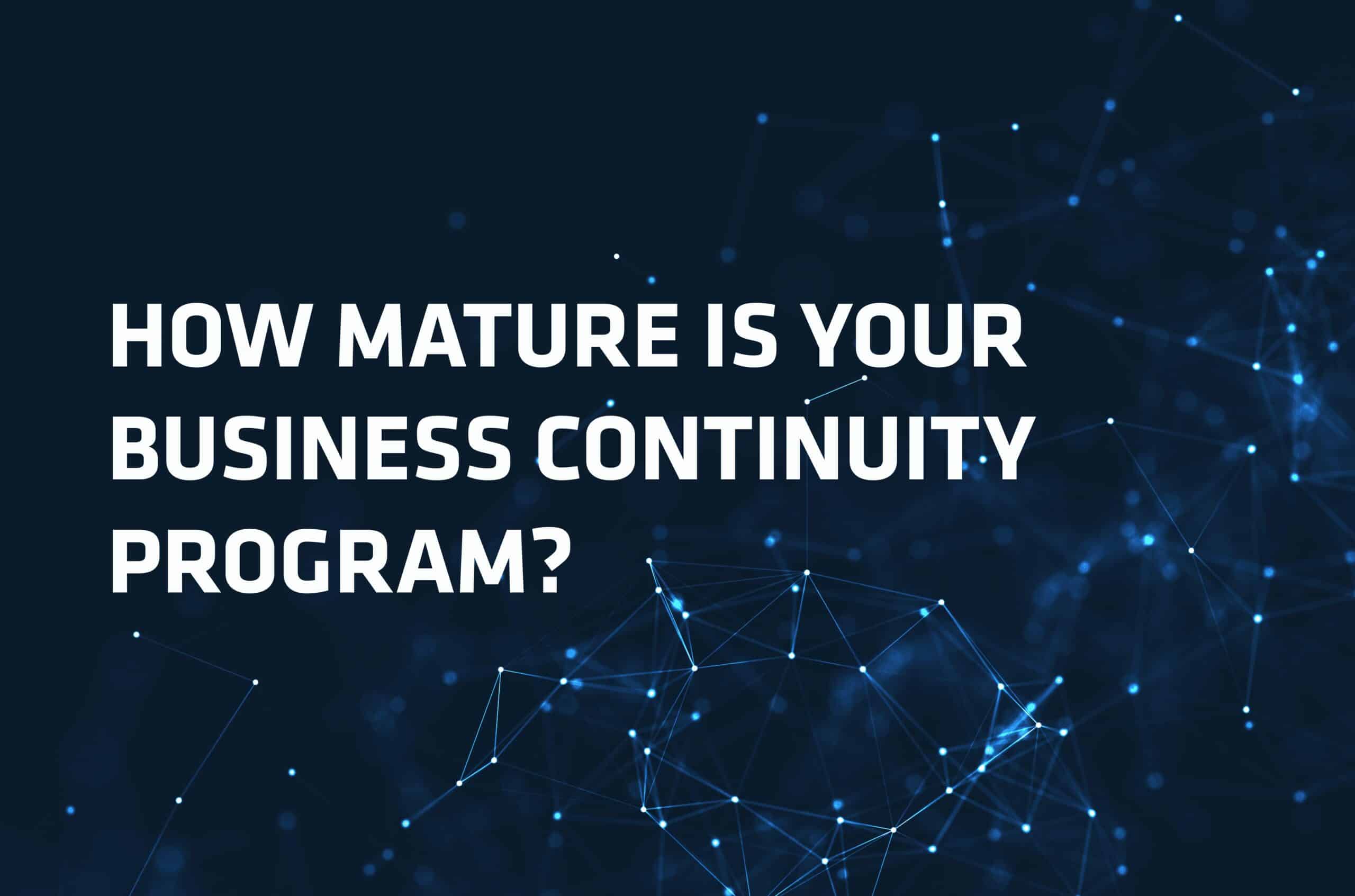Business Continuity Program Management: Everything You Need
Posted April 7, 2022 by Kevin Finch

Maturity is a term that is often brought up in the world of business. Bonds mature, markets mature, neighborhoods mature, and (hopefully) technologies mature as time goes on. Every time the word gets used, however, the context is critically important. Clearly when we’re talking about the maturity level of a grand new technology, we’re not talking about the same maturity as you might see in a product’s life cycle or when an investment matures. So, what does maturity mean in the context of Business Continuity?
Companies generally get their start down the road to developing a Business Continuity program following some sort of critical incident response, or because external pressures compel them to. Sometimes they have some sort of business interruption that cost them money, or they get scared because they had an incident that ALMOST interrupted business and cost them a lot of money. Sometimes their customers, regulators, or shareholders demand that they look into improving their Technology Resilience.
However it happens, Business Continuity programs generally start with individual departments putting together ad hoc recovery strategies. Over time, the company may outgrow those individual plans and begin to add some oversight to the process. If the company continues to grow along this path, they will centralize some aspects of it, correlate the recovery needs of the business against their ability to recover, and will likely purchase tools to help manage the process. If the program continues to grow, upper management will get more actively involved in the program, the company will start to validate their plans regularly, and the awareness and reach of the program will widen to encompass most aspects of the business. At the far end of this path, you will find companies that not only have all departments actively involved in their Business Continuity Strategy, they bring a continuity mindset into all aspects of their business. Some companies even go so far as to include their Business Continuity programs in their marketing materials because they place such confidence in their ability to continue operating in whatever adverse conditions they encounter.
Keeping that journey in mind then, from someone writing a simple departmental recovery plan all the way through to putting out press releases about your resiliency, there are fundamental steps in the process that every company follows. Yes, some aspects of the journey might be tackled in a different order, or with different priority depending on individual circumstances, but there is a remarkable sameness to the journey for all companies as their programs mature and adopt more best practices in Business Continuity.
Given that sameness, and given that best practices are generally agreed upon the world over in Business Continuity (thanks to international standards organizations), one can readily gauge how mature a business continuity program is by seeing how closely best practices are followed. With the right tools and expertise, it’s not that difficult to measure how mature a Business Continuity program is. Likewise, knowing where your company lies along that journey, it’s much easier to determine what areas are best to focus on to bring the program forward.
At times Business Continuity might seem like a bewildering concept, and maturing your program might seem like a rocky path that’s difficult to follow. Sayers is here to help. We have developed a Business Continuity Maturity Assessment Tool that we can use to show you exactly where you are on the path, and where you might need a little help.


